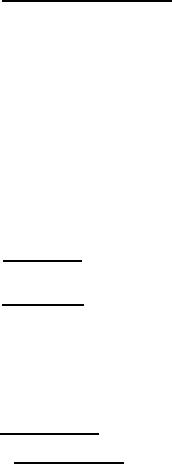 |
|||
|
|
|||
| ||||||||||
|
|  MIL-M-17413A(NAVY)
4.2.4.2 Air-gap measurements.-
4.2.4.2.1 Where apertures are provided as specified in 3.2.19.1, the minimum air gap between the
armature and field poles shall be measured by suitable feelers or gages. The measurements shall be
made in at least 4 places approximately 90 mechanical degrees apart. One of these measurements, where
practicable, shall be made at the bottom on each end of the motor. The air gap at any point on the
armature periphery shall be not less than 70 percent of the nominal gap, the nominal gap being half the
difference between field poles and outside diameter of the armature. Where it is impracticable to measure
some or all of the air gaps directly as specified, an alternate, indirect method may be used at the discre-
tion of the Government inspector. The air-gap measurements shall be recorded and made a part of the
test record.
4.2.4.2.2 Where apertures are not provided, the uniformity of the air gap shall be determined by
ascertaining that the rotor turns freely in the assembled motor, when wound with a wire spaced spirally
around the rotor periphery. For this test, the diameter of the wire shall be 70 percent of the nominal air
gap of the motor. When this method of checking air-gap uniformity is employed, it need only be applied
to those motors chosen for selective tests.
4.2.4.3 Resistance. - The resistance of all windings and the temperature at which they are
measured shall be taken and recorded for the cold and hot conditions.
4.2.4.4 Lubrication. - The effectiveness of the lubricating system with the motor in its normal
position shall be observed during the progress of the other tests, or by special test, as the circumstances
may warrant. The oil rings of sleeve bearing motors shall turn freely and there shall be no foaming of the
oil. Lubricants approved by the bureau or agent y concerned, similar to those required for service opera-
tion shall be used. It shall be demonstrated that the motor lubrication is satisfactory, that the specified
limitations of the bearing temperatures have not been exceeded and there is no suction of lubricant into
the electrical windings under any operating condition. The test report shall indicate that such tests have
been made.
4.2.4.5 Audible noise. -
4.2.4.5.1 By observation. - Observation shall be made of motor noise during the progress of
testing to determine that the motor is free from any degree of noise comparably greater than that inherent
in the given type and size of motor.
4.2.4.5.2 By instrument. - Audible noise meter tests are applicable when audible noise limits are
specified (see 6. 2) and measurements shall be made in accordance with the procedure specified in
American Standard "Apparatus Noise Measurements" Z24.7 - 1950 with the following exceptions:
(a) The airborne noise level of each motor shall be measured with the ` `flat" weighing
network at a distance of 3 feet.
(b) Observers or reflecting surfaces, other than the floor When necessary, Shall be
not less than 3 feet from either the microphone or the motor being measured.
(c) In cases where the measurements cover a range of 10 db or m ore, as in the case
of motors producing a highly directional noise, the individual readings at each
microphone location shall be reported and summarized in terms of power average
together with the maximum and minimum values.
34
|
|
Privacy Statement - Press Release - Copyright Information. - Contact Us |